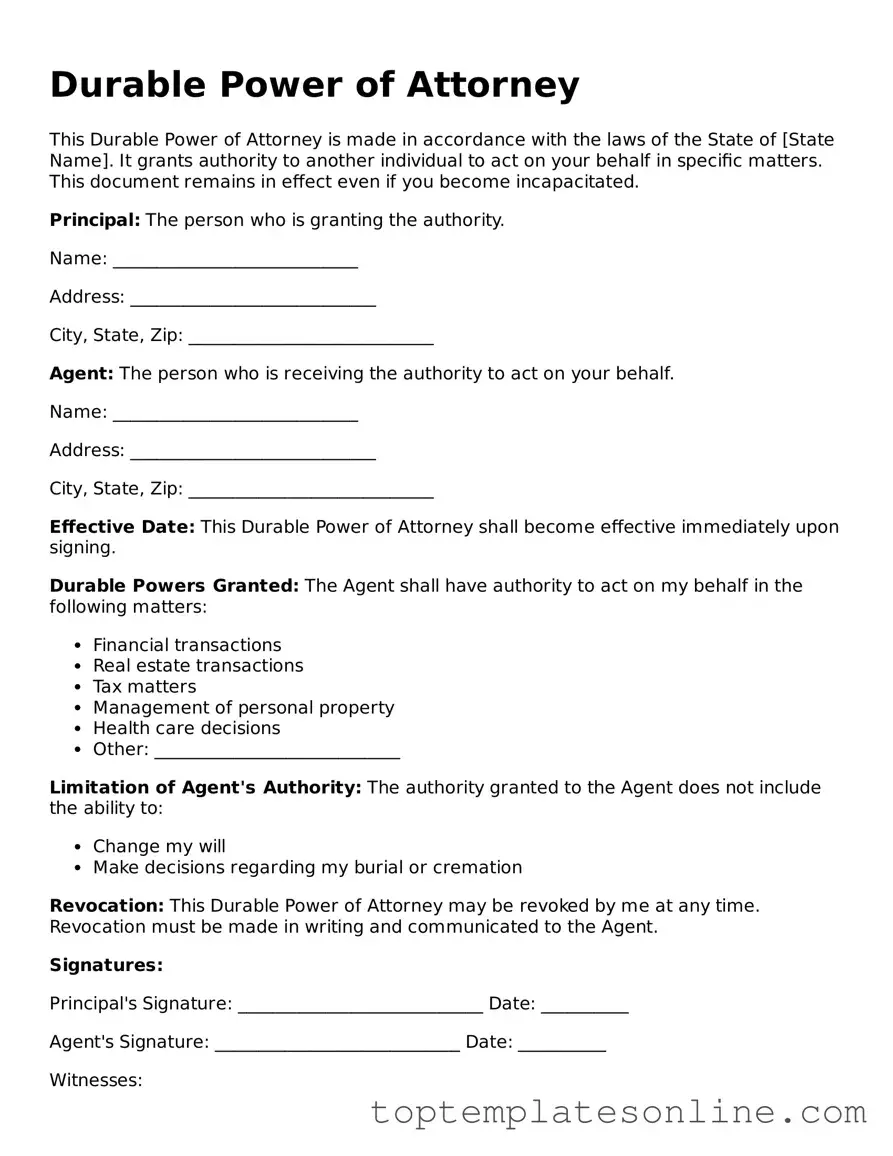Attorney-Approved Durable Power of Attorney Form
A Durable Power of Attorney is a legal document that allows an individual to appoint someone else to make decisions on their behalf, particularly in financial or medical matters, should they become incapacitated. This form remains effective even if the person who created it is unable to make decisions for themselves. Understanding the implications and proper use of this document is crucial for ensuring that your wishes are respected during challenging times.
Customize Durable Power of Attorney Here
